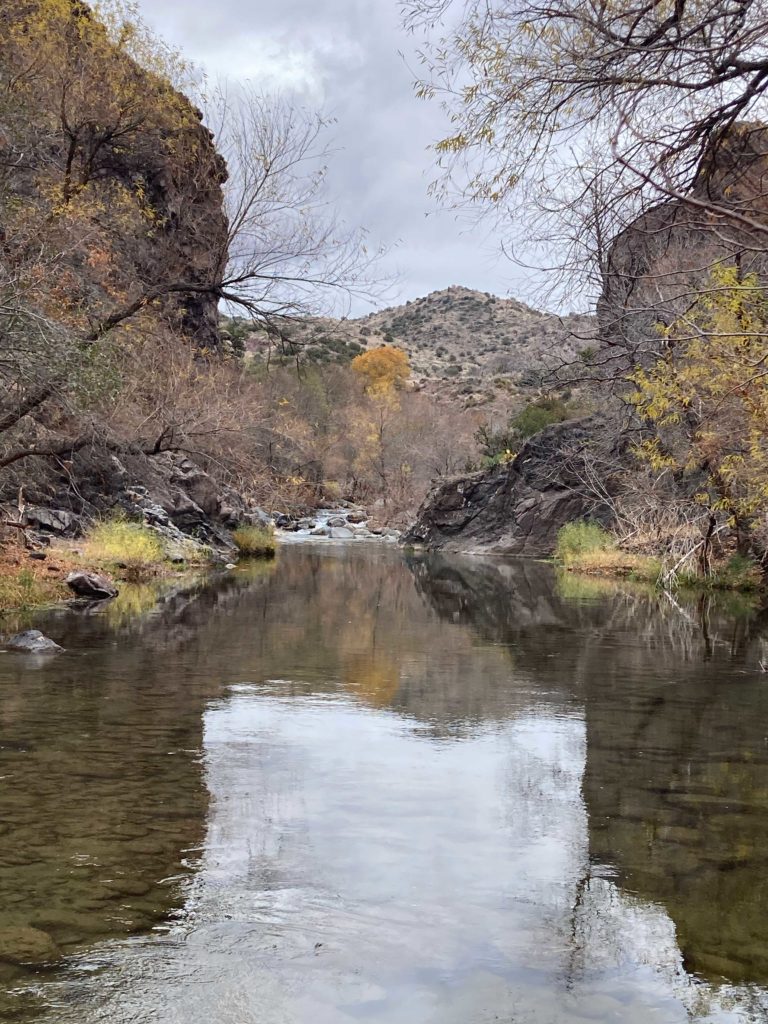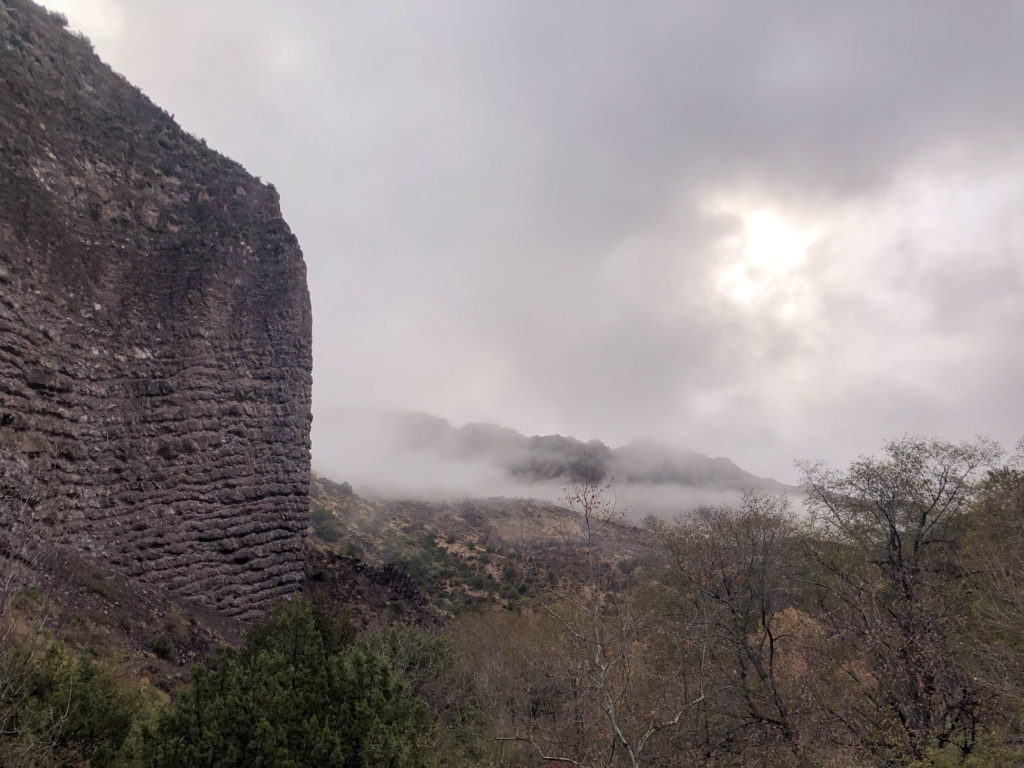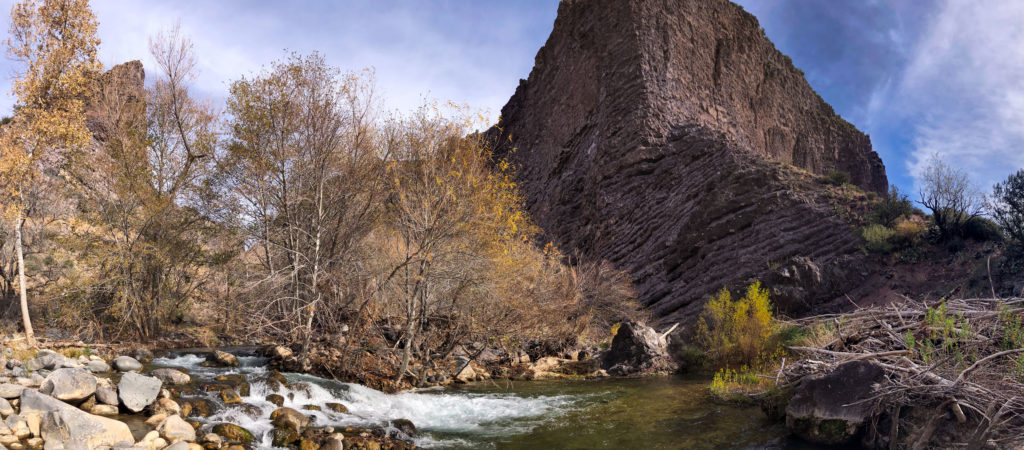
Written by Nico Lorenzen, Wild Stew Field Crew Leader.
Hello readers and welcome to 2024! Fieldwork in winter (even in Arizona) is a time that finds us casting furtive glances to the skies in anticipation of clouds that warn of storms from the mountains or wet days and cooler nights. Despite this, the Wild Stew Field Crew braved a few days of capricious snow, hail, rain, and sleet in order to continue our work in removing the invasive Giant Reed (Arundo donax) from the lower portion of the Fossil Creek watershed. If not for our current trials and tribulations with the effects of climate change, invasive species and their concomitant effects on natural resources and native species would be the biological topic at the fore of our consciousness. The threat of invasives is pervasive and all too real, as many of our readers are no doubt familiar.
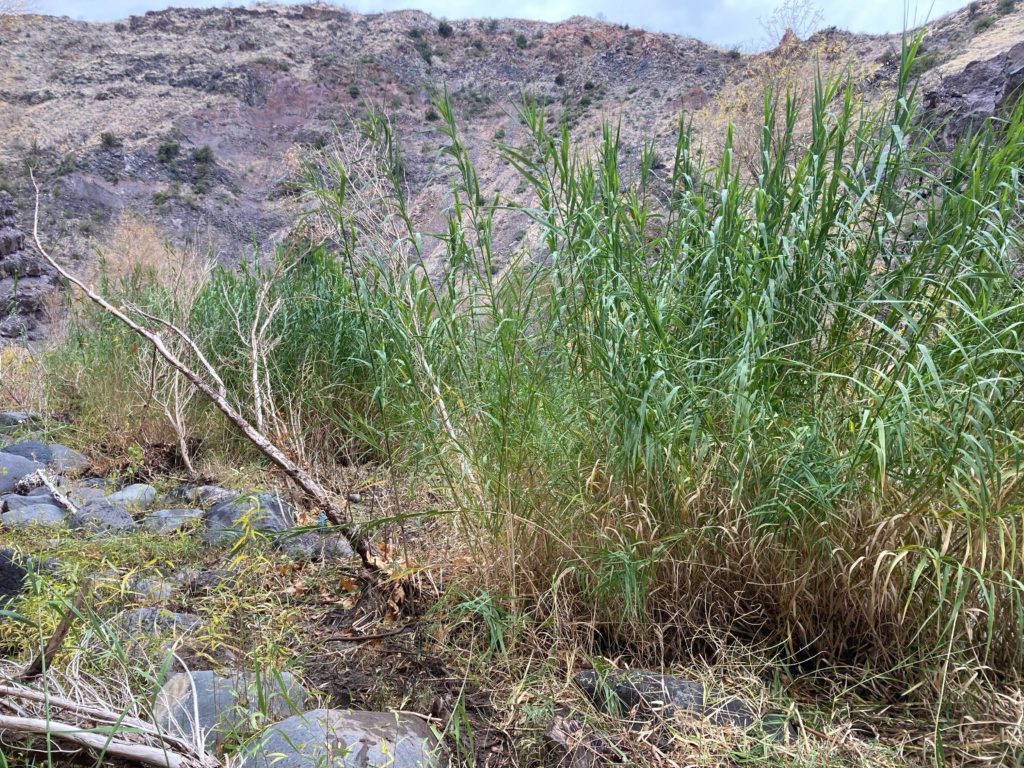
Arundo has a bamboo-esque appearance and inhabits riparian areas where it can outcompete native plants such as willow and cottonwood, as well as depleting aqueous nutrients. Notably, Arundo guzzles three to four times as much water as native plants, lowering the water table and putting entire riparian areas into a tenuous situation. In an effort to curtail this vociferous villain we signed on with the Friends of the Verde who are leading the charge on removing Arundo from the Verde River and its tributaries. So we spent a cold January hitch, careening off trail to a basecamp past the narrows of lower Fossil Creek where we could hack our way through hordes of the reed before applying herbicide directly down the nod structure to best target Arundo and give it a dose large enough to discourage further growth both at the focal patch and further downstream.
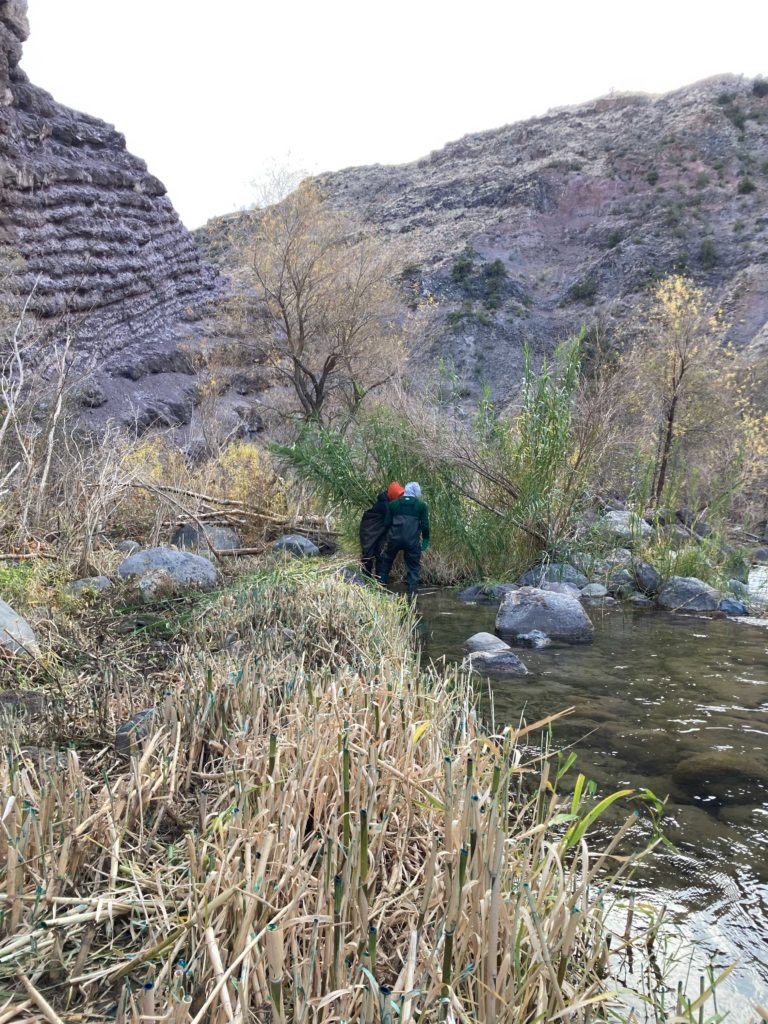
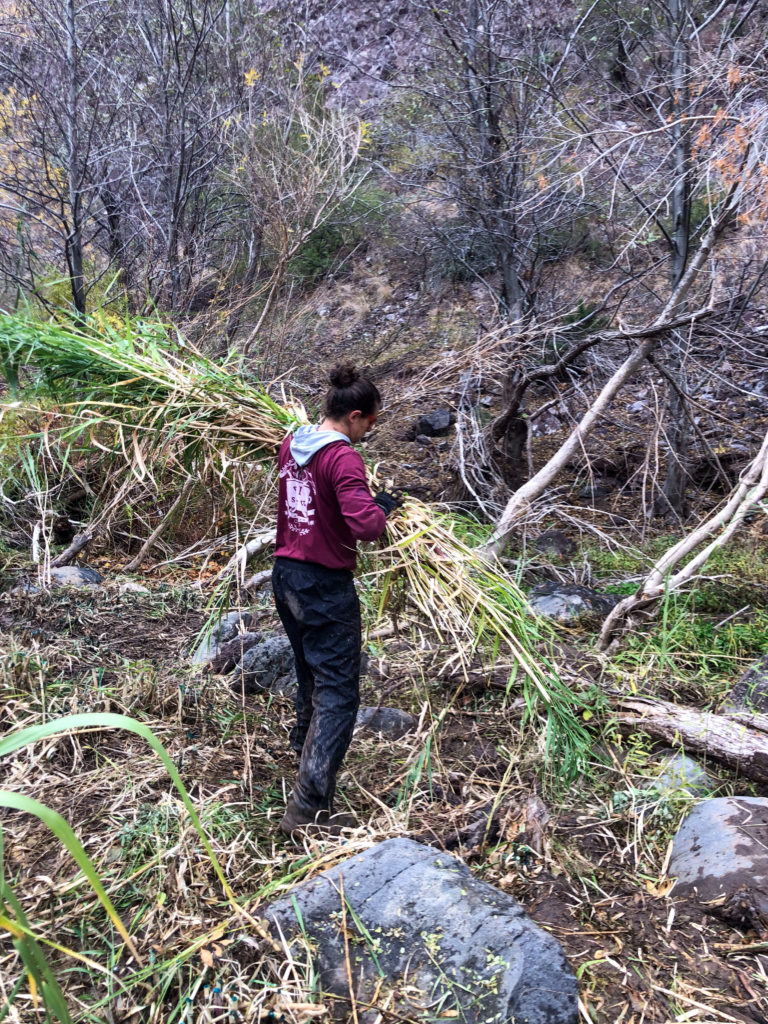
All in all, the Wild Stew Crew and Hudson from the Friends of the Verde dispatched 27828 stems of Arundo and we look forward to clearing out more in upcoming seasons with an eventual hope that our native riparian flora can push out this dastardly invader. Until next time, keep it wild!
